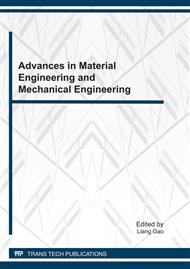p.39
p.45
p.51
p.55
p.61
p.67
p.73
p.79
p.83
Interfacial Stress Analysis of Fiber Sheet/Steel Plate-Reinforced Concrete Beams with Cracks under Tension and Bending
Abstract:
On the basis of the analytical methods of composite mechanics, a layered shear-lag model was established to study the shear stress distributions of the interfaces between concrete and adhesive layer as well as adhesive layer and fiber sheet or steel plate for fiber sheet/steel plate-reinforced concrete beams with cracks under tension and bending. The results show that the properties of strengthened materials have some effects on the interfacial shear stress. The level of interfacial shear stress increases as both the length of cracks and thickness of fiber sheet or plate are increasing. The influence of crack spacing distance and thickness of adhesive layer on normalized interfacial shear stress is relatively less. The axial tensile force has some impacts on the interfacial shear stresses.
Info:
Periodical:
Pages:
61-66
Citation:
Online since:
July 2011
Authors:
Keywords:
Price:
Сopyright:
© 2011 Trans Tech Publications Ltd. All Rights Reserved
Share:
Citation:


